Citizen Science
What is Citizen Science?
Citizen Science is the collection of scientific data relating to the natural world by non-professional scientists (members of the general public), often for the greater good of the community. Citizen Science usually serves a purpose for a specific entity and is part of a larger project.
What does Citizen Science look like at CCPR?
Citizen Science is an important piece of CCPR’s park stewardship program. The data collected in our parks will help us better manage and preserve the natural resources in our parks for the long-term sustainability of the environment. We rely on this data from our community to create real positive impacts in our parks.
We have a few different Citizen Science programs that volunteers can be involved in depending on their interest. Our established programs include bird monitoring, invasive species monitoring, native plant monitoring, bluebird monitoring, and stream monitoring.
We are always looking to grow our Citizen Science program! If you have a unique skill or interest in another area of natural resources, please reach out and we’ll see if we can offer an option. Pre-determined protocols are used from expert scientific community organizations to preserve data quality amongst participating entities so that our data can be used by varying organizations in larger planning efforts to measure real issues and justify policy making decisions.
Citizen Science FAQs
-
How old do I have to be?
We want as many people to participate in our monitoring program as possible. The minimum age for independent monitoring is 18.
-
Do I have to be an expert on my topic?
No, you do not have to be an expert by any means. If you have an interest in learning, that’s all we ask for. We will provide a basic guide during training that is specific to our parks, but we encourage you to continue your self-learning journey beyond our reference materials.
-
What kind of time commitment am I signing up for?
Each volunteer monitor will be required to conduct in-field monitoring three hours each month, but we encourage monitors to engage in data collection as much as they would like.
-
What if I only want to monitor one time?
That’s ok! We hold public monitoring events throughout the year that you can participate in as a one-time volunteer. Things like BioBlitz, Monarch Tagging, Pollinator BioBlitz, and Native Seed Collection may be events you would like to participate in. Make sure to check out our seasonal program guide to learn about upcoming opportunities!
Become a Citizen Scientist
Explore Our Current Opportunities
These are our current opportunities. Please reach out to the Natural Resources Coordinator if you have any serious interests in other Citizen Science opportunities.
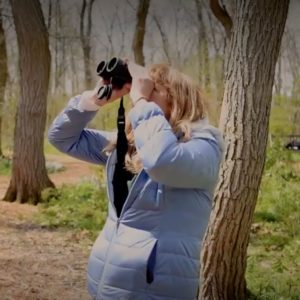
Bird Monitor
The diverse bird community in our parks can be documented and shared with the help of our own community of birders! The citizen science app eBird is based in the Cornell Lab of Ornithology and is the leading application used to monitor bird species and patterns globally. Information collected from eBird provides valuable data on population trends, migration and birding “hot spots.” If you are an aspiring birder or just want to learn more, join us in setting up your own eBird account and learn about volunteer opportunities using eBird!
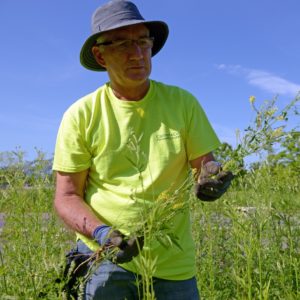
Invasive Monitor
Invasive species are a top priority for land management in park systems, communities and backyards. One of the best ways to keep track of invasion and spread is with mapping. Through the GIS FieldMaps app, we allow volunteers to go into our parks and map the various invasive species. This data is used to go back and manage for invasives as well as formulate plans for managing these natural spaces.
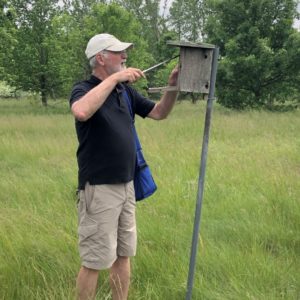
Nestbox Monitor
Across our parks system, we have numerous bluebird boxes stationed in prime bluebird habitat. Why do we care about bluebirds? Bluebirds are insectivores and in the 1960s the bluebird population was in serious decline. Birds in general are indicator species, which means they can tell us a lot about the current state of the environment. With a loss of habitat and food source, bird populations, like bluebirds, can decline. By participating in bluebird monitoring in the parks, you can aid in the science behind bluebird population trends and help us track the health of our own bluebird population.
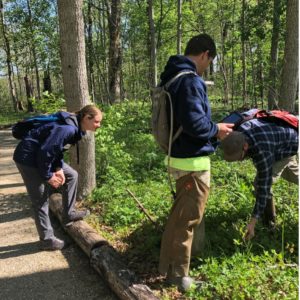
Native Plant Monitor
Our native plant monitors use iNaturalist, an online social network, to help identify the plants and animals in our parks and share biodiversity information. Whether flora, fauna or fungi is your thing, join us as a native plant monitor where you will help CCPR track the native species that our parks offer.
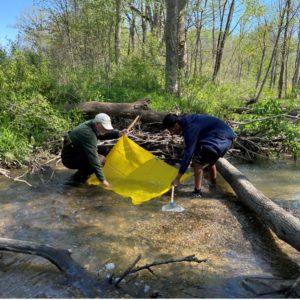
Water Quality Monitor
Through the Indiana Department of Environmental Management, CCPR is enrolled in the Hoosier Riverwatch Program. We use science to test both the physical and chemical aspects of the waters that flow through our parks. Carmel Creek and Cool Creek are two of the streams we currently monitor using dipnets, turbidity, pH, velocity, and more. If you have interest in getting your hands in the water, join us for hands-on learning about the creeks and streams flowing throughout parks and aid in the overall understanding of what’s going on in our waters.
Seasonal Stories
Citizen Science Spotlight: Patty Steffen
CCPR volunteer/Citizen Science projects you’re part of:
Citizen Science Bird Monitor and Native Seed collection.
When did you start volunteering?
I started volunteering in 2013 with various park events and in 2019 I began volunteering with the Citizen Science program.
Why is volunteering with CCPR important to you?
City parks are a gift. I feel fortunate to live in a city with many parks and recreational areas that are open to all. Volunteering gives me the opportunity to “give back” where I can lend a hand with various park programs and projects.
Why is park stewardship important to you?
Carmel has a beautiful park system. As city residents, being stewards of our parks is something we can all be a part of it. Park Stewardship is a great opportunity to learn more about nature and to learn new skills, and most importantly, help take care of our parks.
What is your favorite memory or favorite volunteer activity with CCPR?
My favorite volunteer activity is the Citizen Science Bird Monitoring. I enjoy tracking the birds in our parks for both CCPR and E-bird (Cornell Ornithology). It’s great fun to see which birds stay year-round, which birds visit for one or two seasons, and which birds just “stop by” for awhile as they migrate through!
